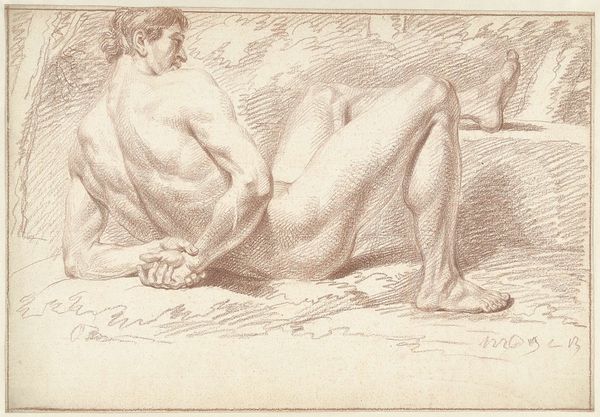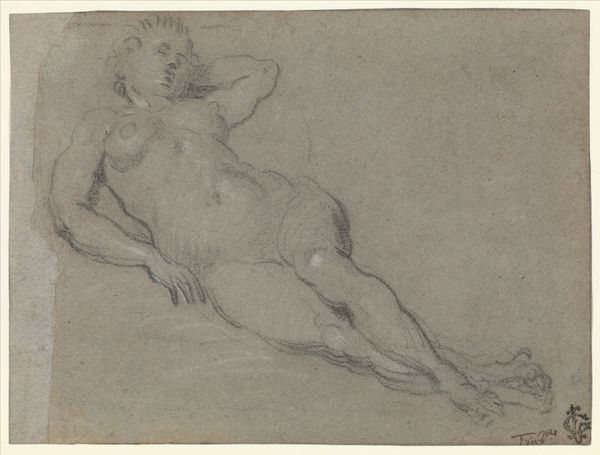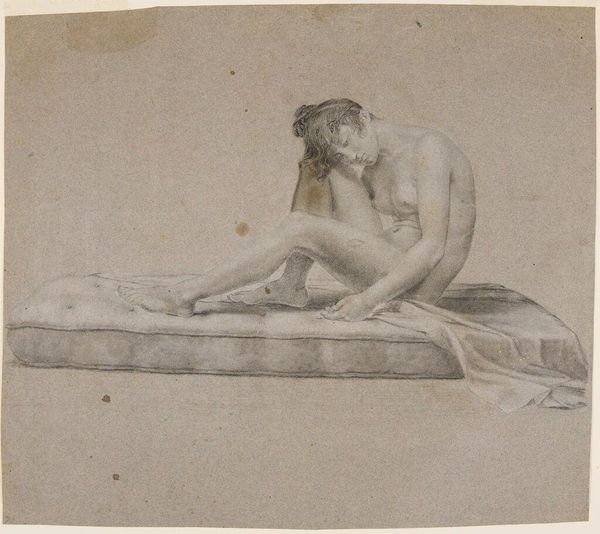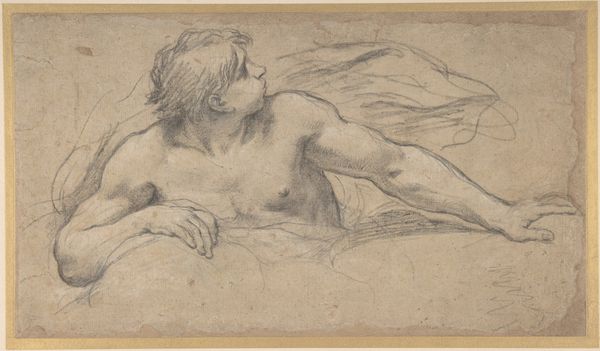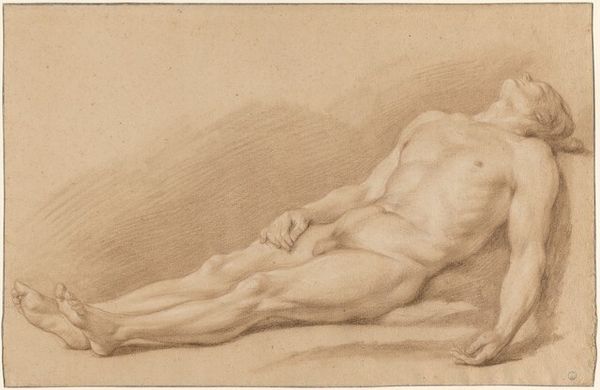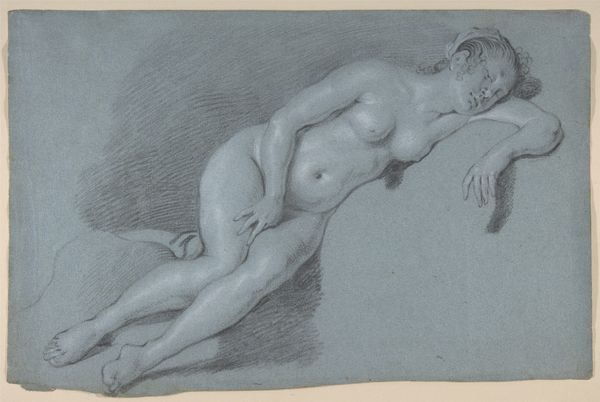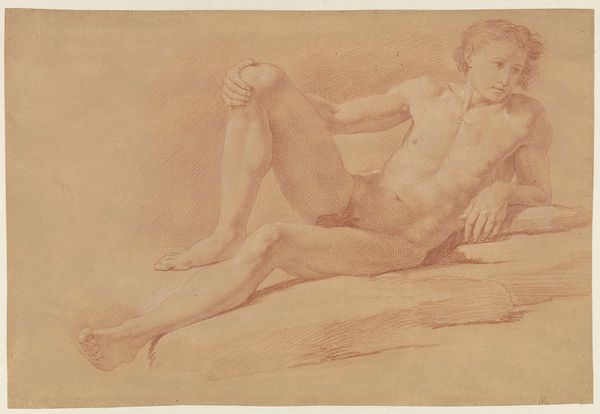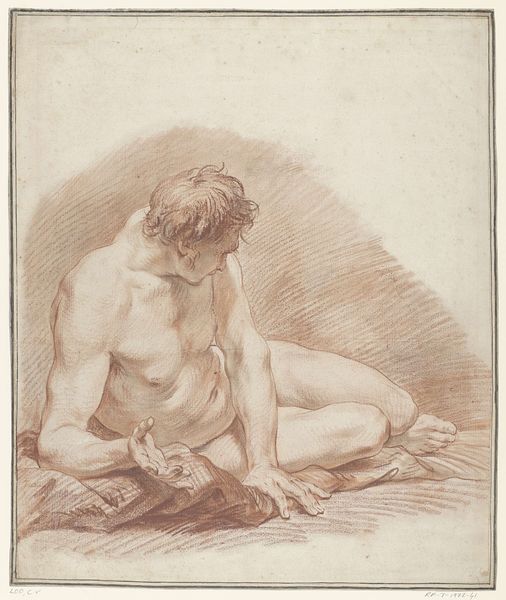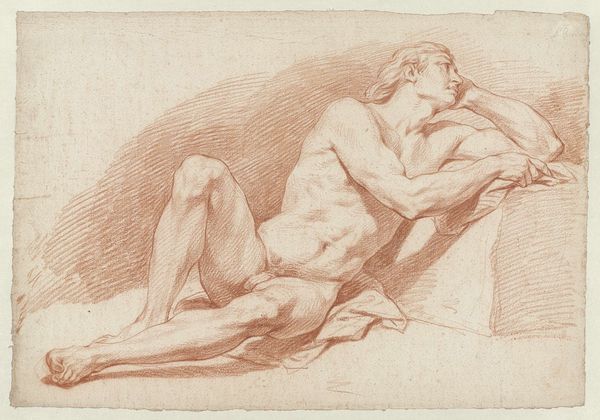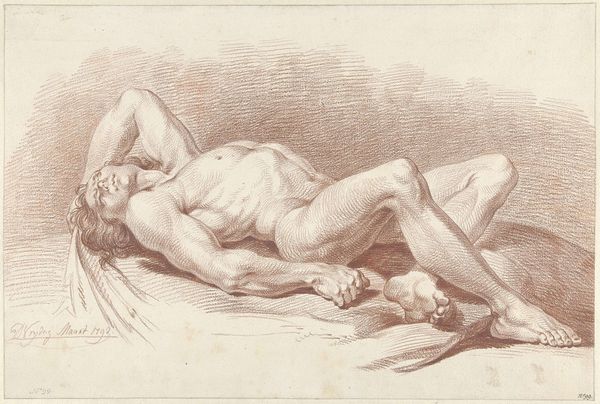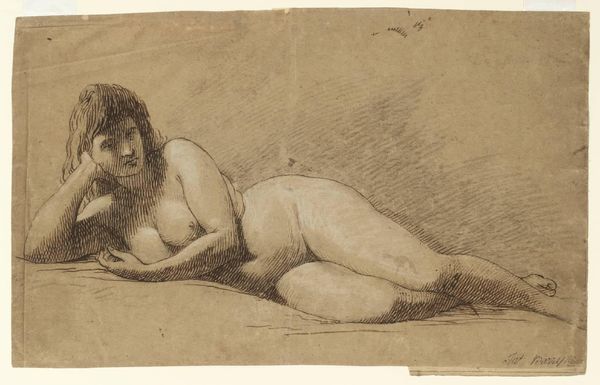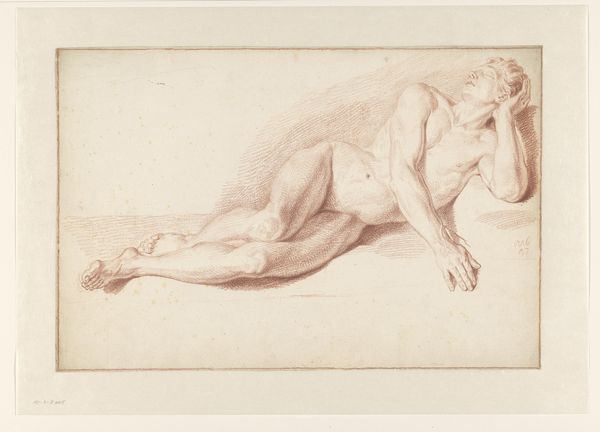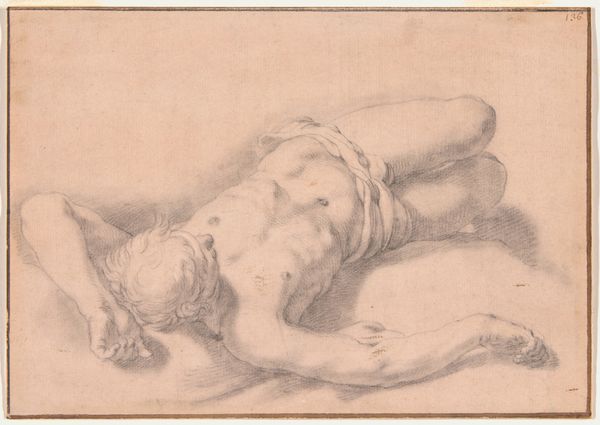
drawing, pencil
#
drawing
#
charcoal drawing
#
figuration
#
pencil drawing
#
pencil
#
history-painting
#
academic-art
#
nude
#
realism
Dimensions: height 267 mm, width 426 mm
Copyright: Rijks Museum: Open Domain
Editor: This is "Liggend mannelijk naakt, naar rechts," a pencil drawing by Alexander Liernur, created between 1780 and 1815. The man’s gaze seems distant, maybe melancholic. How do you interpret this work, especially the use of light and shadow in portraying the male nude? Curator: This image reminds me of classical depictions of heroes or gods in repose, but stripped of overt symbols of power or divinity. The medium of pencil, or perhaps charcoal, renders the flesh tones subtly, emphasizing the vulnerability of the human form. Consider how the unseen light source highlights certain muscle groups while leaving others in shadow. What might this contrast evoke for you? Editor: I guess it makes the figure feel very real and tangible. The shadows almost create a sense of depth and weight. It reminds me that this is a body, not an idealized form. Curator: Exactly! The artist seems to be working within a tradition, perhaps emulating academic exercises, but he subtly personalizes it. Do you see any emotional depth conveyed in the way the subject is positioned? The reclining pose may reference ancient statuary, evoking the visual language of antiquity. However, instead of grand narratives of heroic battles, what story do you believe is communicated through his specific features and disposition? Editor: It’s not something I picked up initially. I think his posture evokes feelings of quiet introspection. Perhaps something more universal like the transience of human life. Curator: The very act of depicting the nude body carries historical and cultural weight, often linked to ideas of beauty, power, and mortality. Seeing it, then, we become part of that continuous narrative, re-evaluating these meanings through the artist's eyes and our own. Editor: I never really thought about the history embedded in the artistic choices of such drawings before, but the classical references make sense, and it highlights new significance that makes the piece resonate even today. Curator: Indeed, observing historical representations as enduring emblems makes one reflect more on societal patterns through images.
Comments
No comments
Be the first to comment and join the conversation on the ultimate creative platform.
